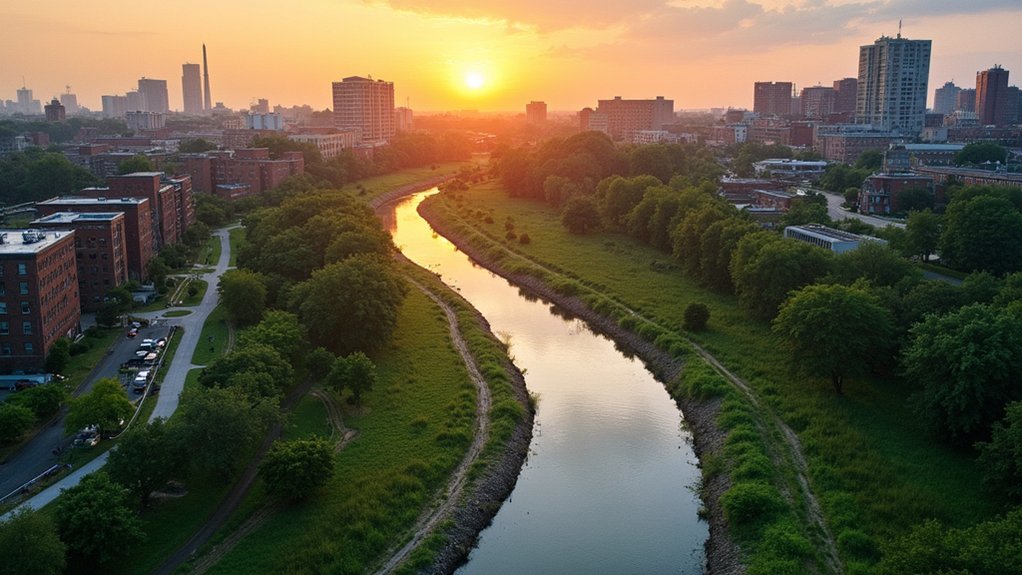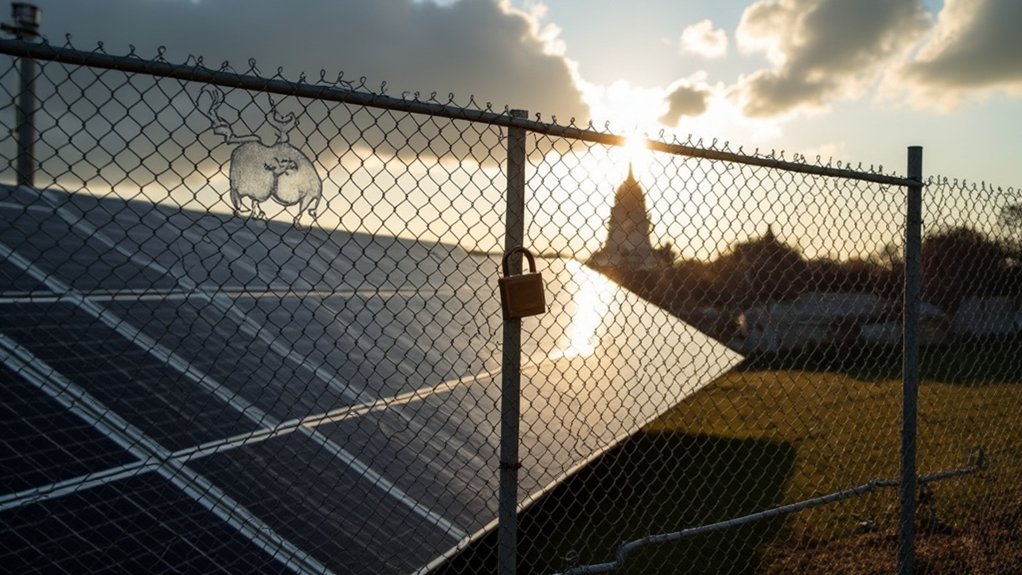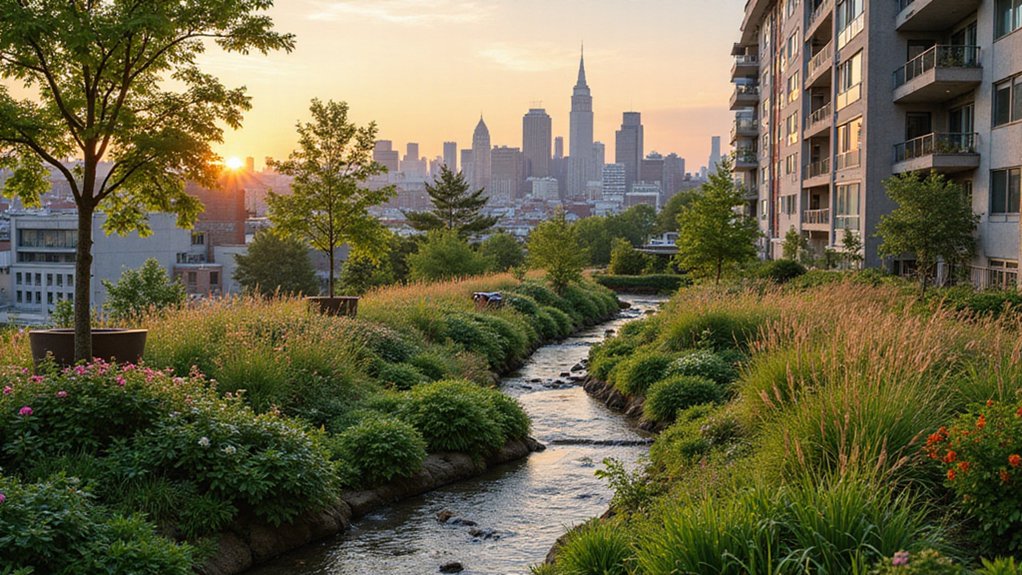Lifeblood of cities throughout human history, urban rivers have shaped the development of civilizations across the globe. From ancient settlements to modern metropolises, waterways provided the essential resources that allowed communities to grow and thrive. These rivers served as crucial transportation routes, enabling commerce and connecting people long before roads and railways existed.
Over time, many urban rivers suffered as cities expanded. The Industrial transformation turned clean waterways into polluted channels. Many rivers were buried underground or confined to concrete channels as cities prioritized development over nature. Paris’s Bièvre River disappeared entirely beneath the streets, while countless others became forgotten or neglected.
Urban rivers sacrificed at the altar of industrial progress, entombed beneath concrete as cities chose expansion over environmental harmony.
This degradation created serious problems for urban areas. Without natural river systems, cities face increased flooding risks, declining water quality, and the loss of wildlife habitats. Urban areas without accessible waterways often become heat islands, making summer temperatures dangerously high for residents. As global temperatures continue to rise, these urban heat islands contribute to extreme weather events that threaten both infrastructure and public health.
Today, cities worldwide are rediscovering their rivers’ value. River restoration projects are creating multiple benefits for urban communities. Daylighting efforts, which uncover buried streams, reconnect neighborhoods to nature and improve flood management. Revitalized riverbanks provide recreational spaces for city dwellers and boost nearby property values. The remarkable recovery of the Thames River in London demonstrates how a once severely polluted waterway can be transformed into one of the cleanest rivers globally.
These restored waterways deliver impressive ecological services too. They filter pollutants, provide habitats for animals, and help recharge underground water supplies. Rivers provide essential services to humans while supporting enormous biodiversity within their ecosystems. Healthy rivers cool surrounding areas and build resilience against climate change impacts.
The economic value of river restoration can’t be overlooked. Revitalized waterways attract tourism, create jobs, and spark business investment. Cities like Seoul, which uncovered the Cheonggyecheon Stream, have seen surrounding neighborhoods flourish with new activity.
With over half the world’s population depending on urban rivers for essential services, their protection and restoration have become increasingly urgent. These forgotten arteries aren’t just relics of the past—they’re crucial infrastructure that could help our cities face an uncertain future with greater strength and sustainability.
References
- https://urbandesignlab.in/value-of-urban-rivers-experiences-perspectives/
- https://fundacion-biodiversidad.es/en/actualidad_home/urban-rivers-an-opportunity-to-improve-the-biodiversity-of-our-cities/
- https://siwi.org/latest/wgf-urban-river-book-chapter/
- https://themetropole.blog/2025/04/02/forgotten-urban-currents-the-role-of-subterranean-rivers-in-shaping-modern-cities/
- https://www.rgs.org/about-us/what-is-geography/impact-of-geography/improving-urban-environments-by-revitalising-degraded-rivers








